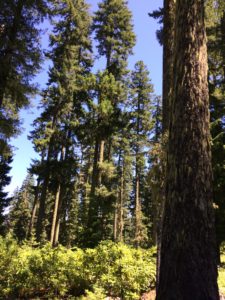Over the past two months, wildfires in the western United States have made national and international headlines on a scale rarely seen before. In California alone, more than 1.5 million hectares (ha) have burned. Three of the top five largest fires since reliable record-keeping first started took place this August and September. In Oregon, following unusually strong easterly winds, a series of small smoldering blazes became fast-moving infernos covering more than 100,000 ha almost literally overnight.
The wildfires in California, Oregon, and Washington are drawing attention to issues ranging from forest management policy and climate change to the impacts of fire smoke on human health to how social media misinformation complicates emergency service response. In a recent webinar, Manomet staff examine some of these topics as we discuss the 2020 fire season and consider options for managing or adapting to a future that will almost certainly involve more damage and disruption from wildfire.
One topic that has been startlingly absent from much of the commentary on the 2020 wildfires is the fundamental role of wildfire in the ecology of many Western forests. Perhaps this is unsurprising; we are all eager for statistics, causes, and implications of wildfires for human populations. However, failing to recognize the role of fire as an ecological process hinders our ability to grasp both the complex causes of major wildfire seasons and the potential options for managing the threat of wildfires.
The ecological role of fire in forests is varied and complex, but we can briefly break it down by talking about the direct effects on vegetation and indirect effects on the environment. Direct effects of fire on vegetation include triggering seed release from the cones of conifers such as lodgepole pine (Pinus contorta var. latifolia) and knobcone pine (Pinus attenuata); in these species, the fire’s heat vaporizes the resin that binds seeds in place within their cones, resulting in their explosive release. Without fire, these species are unable to complete their life cycle.





 Back to all
Back to all

